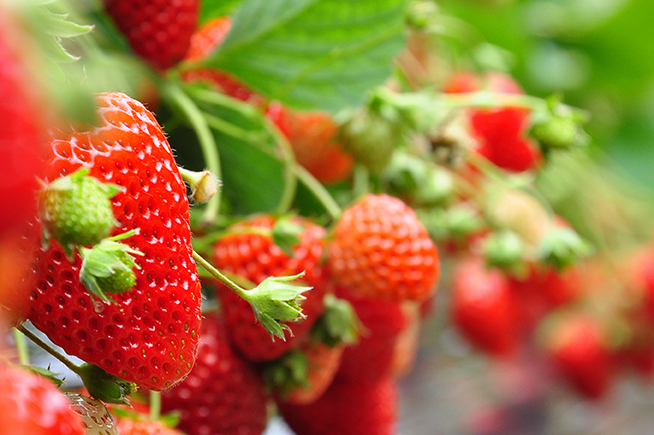5 Alternative Crops Florida Farmers Should Consider
Florida growers are constantly looking for alternative crops to diversify and find new markets. With pest pressure and increased competition challenging traditional crops, that hunt is becoming more intense. Some alternatives might work, while others will not, but it is good to know folks are on the lookout for new crops suited for the Sunshine State. Here are a few crops that may one day become staples for Florida growers:
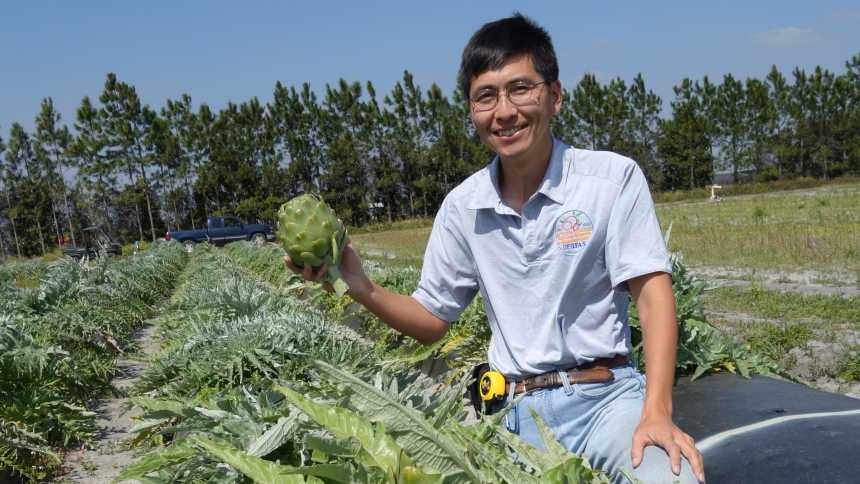
Shinsuke Agehara, a UF/IFAS Assistant Professor of Horticultural sciences, believes he can grow artichokes in Florida, despite the crop’s need for a cooler environment.
Photo courtesy of UF/IFAS
1. Artichokes: An arid climate crop, artichokes are being studied for their fit in Florida. Shinsuke Agehara, a UF/IFAS Assistant Professor of Horticultural Sciences at the Gulf Coast Research and Education Center, believes the crop might have a fit in Florida. He is using a plant hormone treatment to overcome the chilling requirements of the crop to artificially induce bud formation. The treatment worked and produced artichoke buds in early spring. Given that the retail price of an artichoke can garner $5 a piece and each plant produces several buds, it could be a profitable alternative crop in the future.
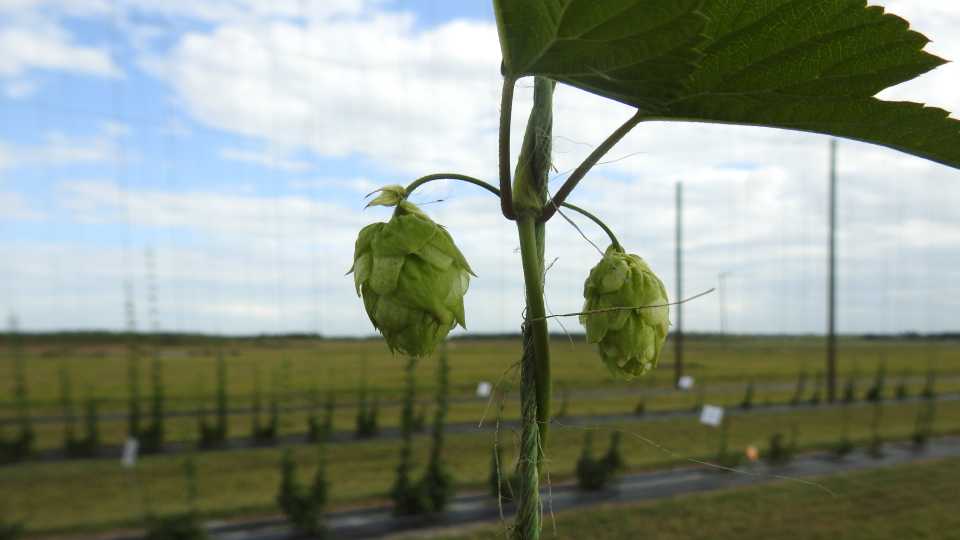
Photo by Frank Giles
2. Hops: With the growing popularity of craft beer, microbreweries in Florida are looking to source locally grown hops. The crop has traditionally been grown in far Northern regions like Washington State and Oregon where daylight hours are longer during critical growing periods. But, research is underway at a number of UF/IFAS facilities to determine if hops are viable in Florida. They have been successfully grown, and St. Pete-based 3 Daughters Brewing has even brewed a batch of beer with Florida-grown hops.
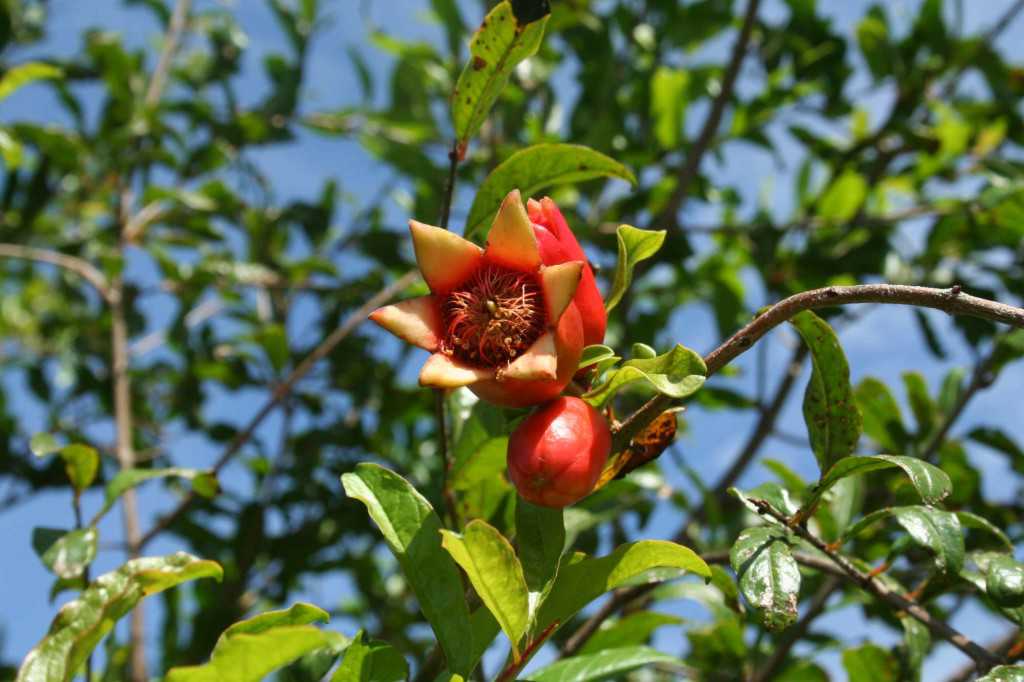
Photo by Paul Rusnak
3. Pomegranates: This alternative crop continues garner attention as growers and researchers seek varieties that can produce marketable yields and fruit in the state’s humid climate. The search is on for low-chill varieties and how to manage diseases that can afflict plants. The good news is there are many lines of pomegranate varieties to select and breed from. The Florida Pomegranate Association was formed in 2012 to further develop the fledgling crop.
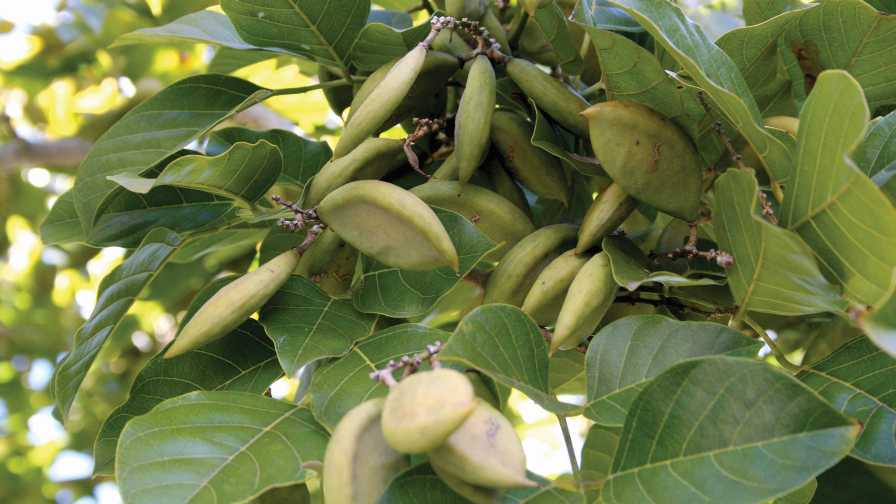
Pongamia
Photo courtesy of Wiki Commons
4. Pongamia: Recently, the Wall Street Journal featured a startup company called TerViva, which is exploring the planting of pongamia as an oilseed crop. It is a long-lived tree that produces an annual harvest of seeds similar to soybeans. But, it produces eight times the amount of oil (400 gallons per acre) as a soybean with a fraction of the inputs. In addition, it is well adapted to a long dry season and has demonstrated tolerance of saline soils. The seeds could be used for biodiesel, crop sprays, lubricants, biopesticides, and animal feeds.
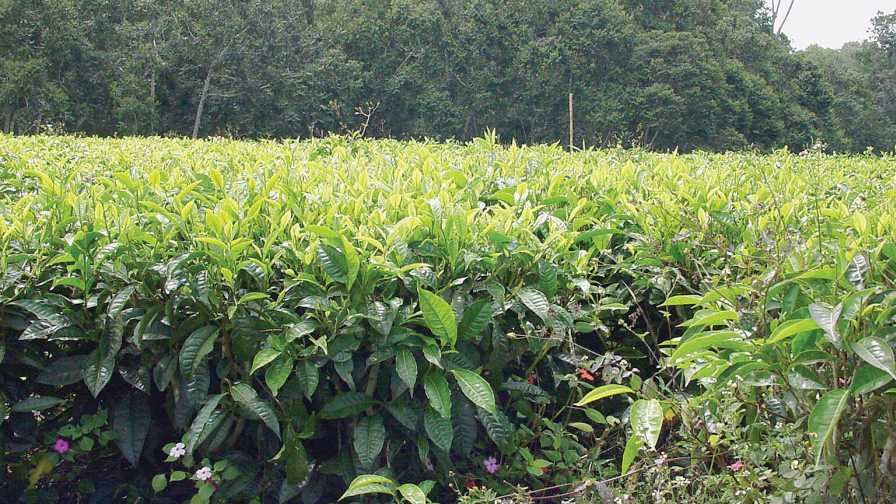
Tea
Photo by Chuck Bargeron
5. Tea: Camellia sinensis var. has been cultivated since ancient times. According to a UF/IFAS study, tea is cultivated in 45 countries around the globe. Some researchers believe it might have potential as a commercial crop in the state given the right circumstances. UF/IFAS has received a grant to study the potential of commercial tea production in the state. Central and North Florida has a similar climate and similar soils to the region in India where the majority of the globe’s tea is grown.







